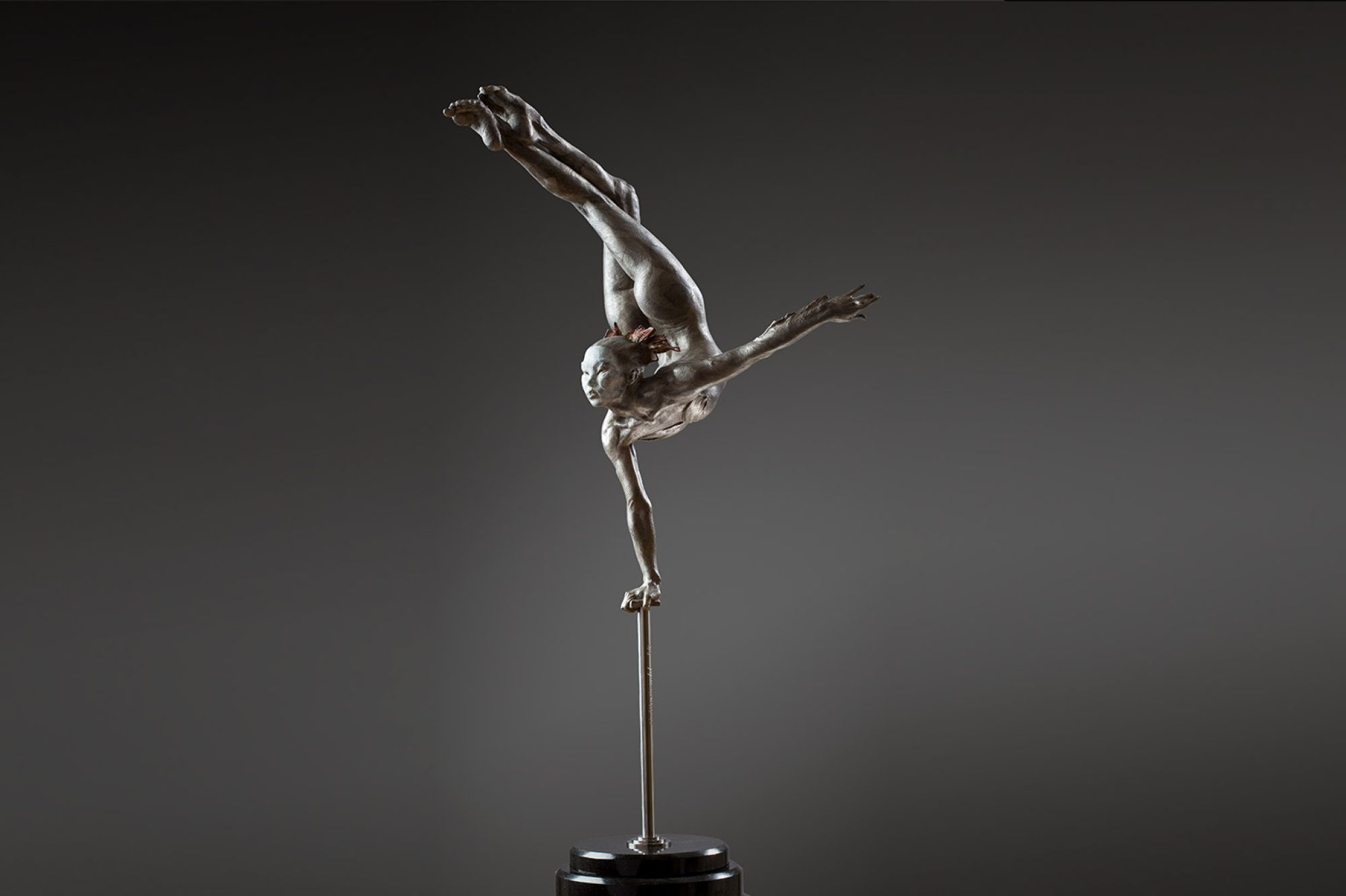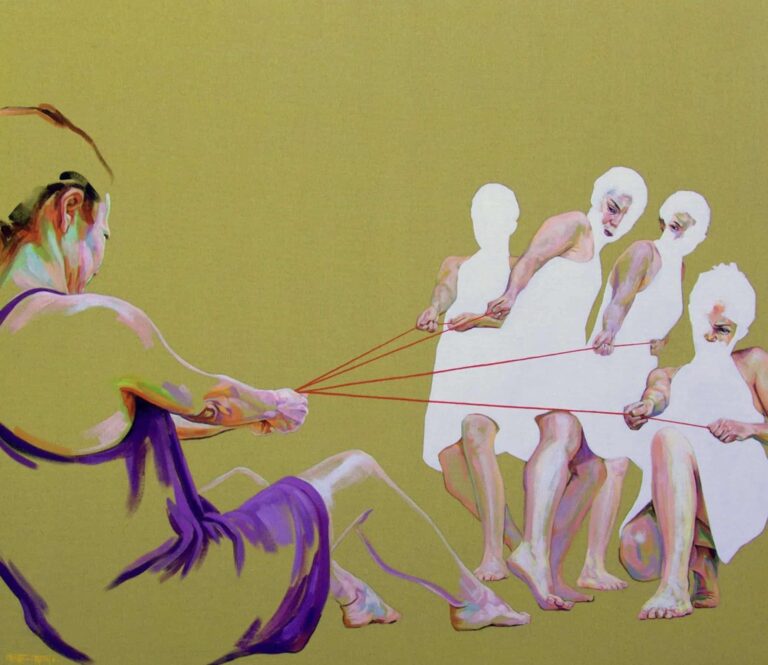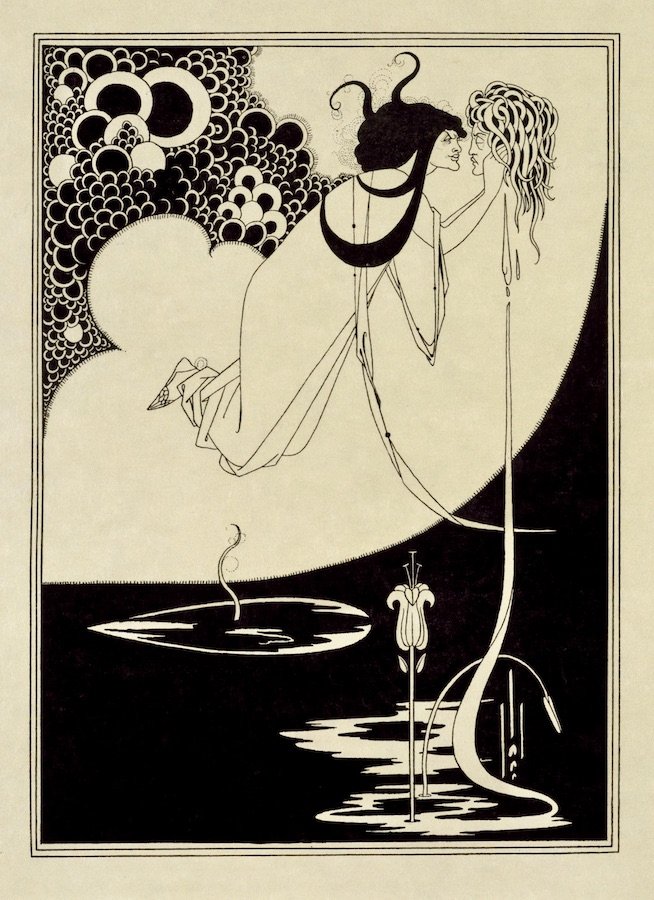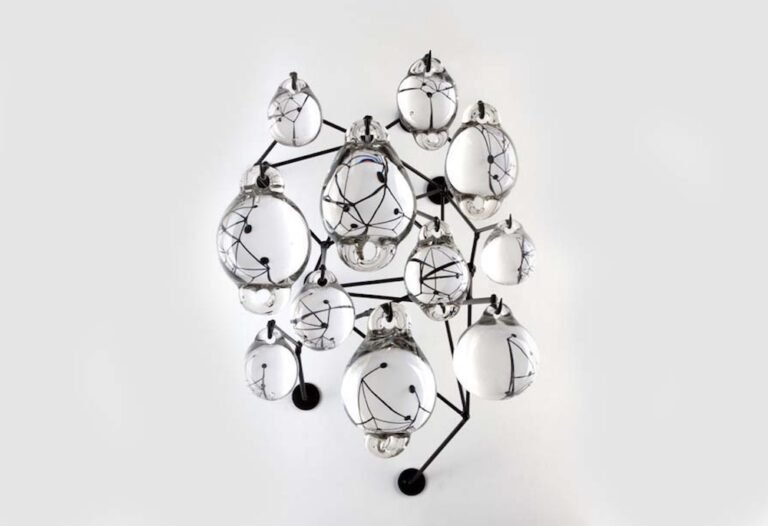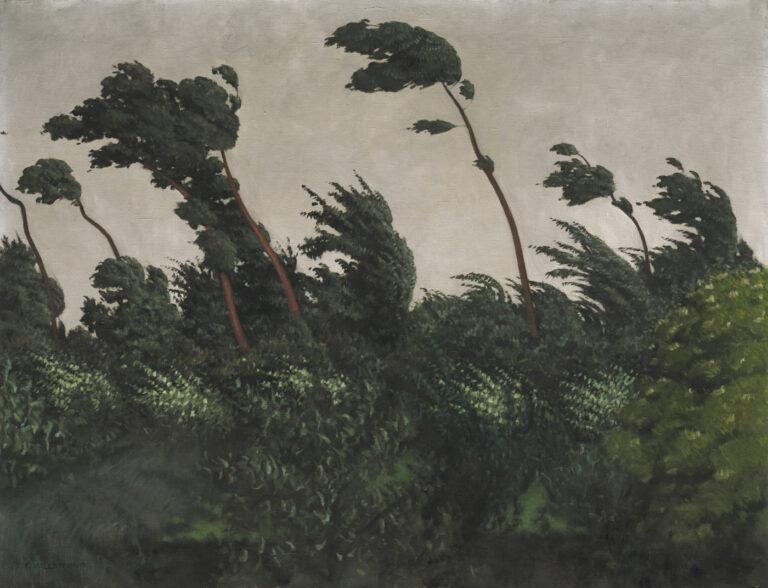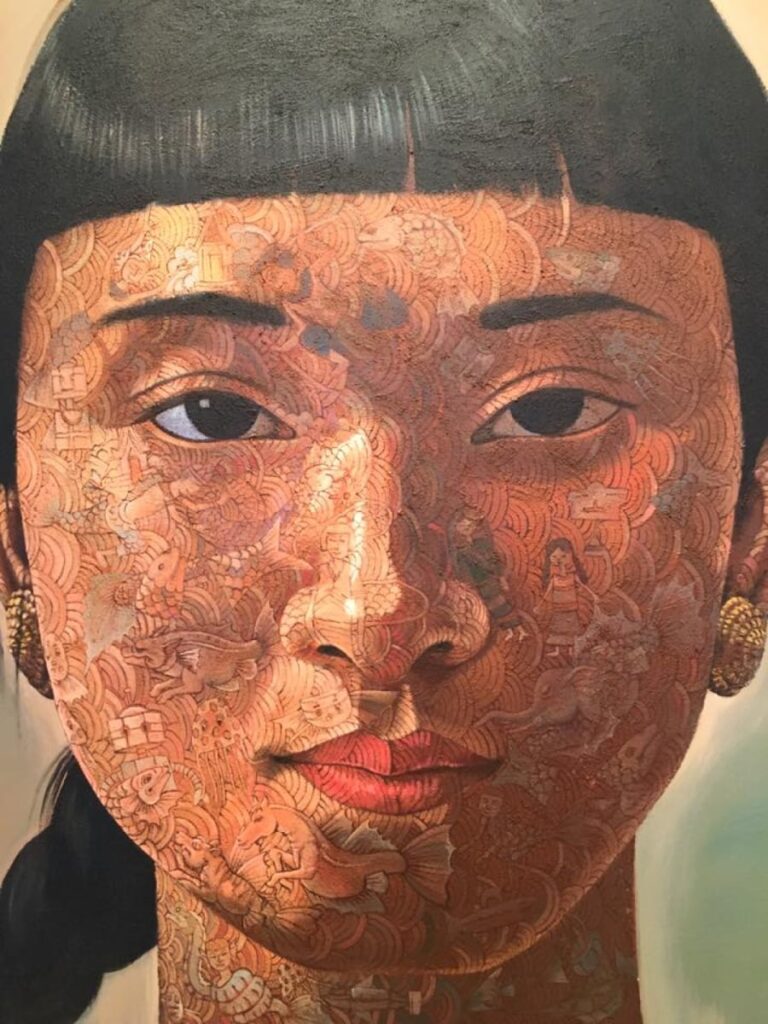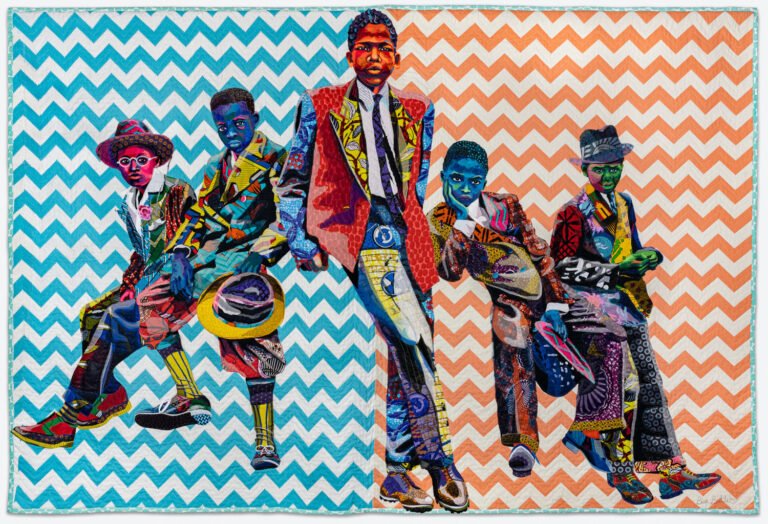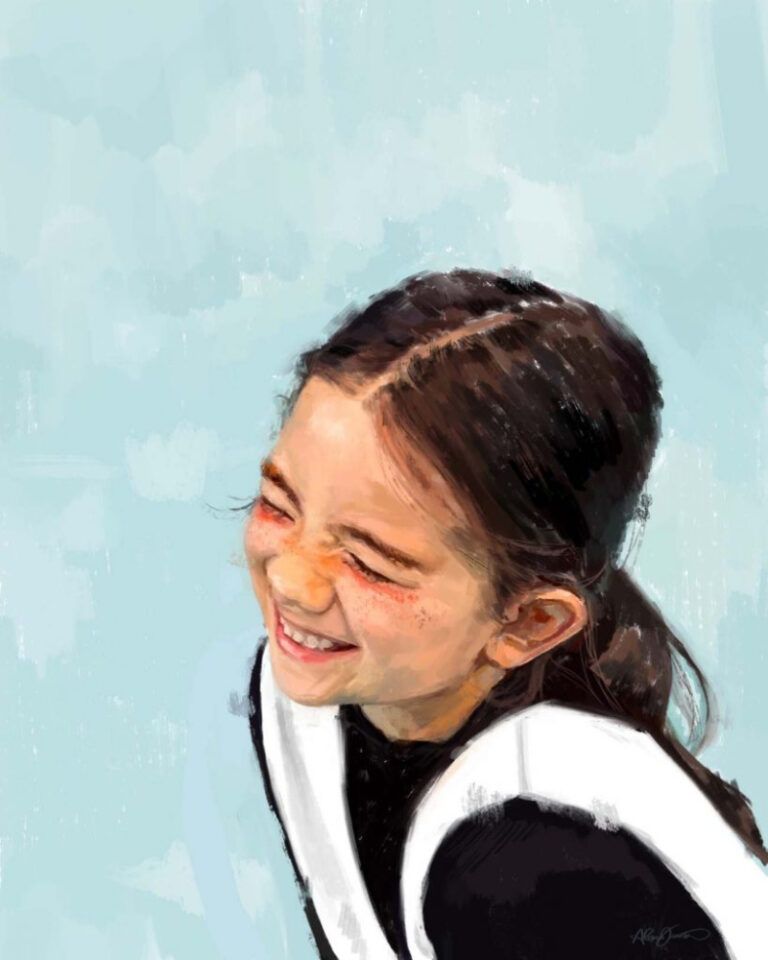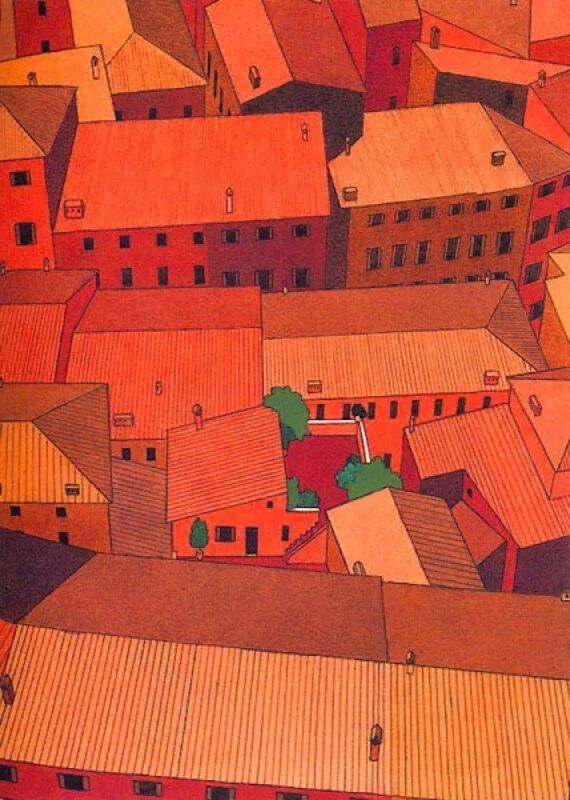Richard MacDonald is a figurative sculptor whose work seems to defy gravity itself and in doing so captures the very soul and skill of his models; from the Cirque du Soleil to the London Royal Ballet School.
Many of MacDonald’s sculptures will have you twisting your head and squinting your eyes in an attempt to work out just how he has managed to have a figurine look in motion, whilst seemingly having it balanced or poised on only the finest sculpted lines or tips. His work is aesthetically beautiful, sometimes monumental in size, and always impossible to tear your eyes from. It’s also highly emotive, with the models’ body language being intricately carved to lose none of its expressiveness, while the taut muscles show not just their athleticism, but the control of the human form to create a sense of wonder and magic.
In order for MacDonald to encapsulate the models’ pose and to gain fresh inspiration for each new sculpture he works in close union with them – observing dancers in-situ at London, to his personal studio in Los Angeles, which has been modernised to provide the latest facilities for MacDonald and his model’s. Providing the opportunity to explore various postures and styles, and thereby sculpt the essence of a movement and the feelings therein. In having such an enhanced strength of collaboration, MacDonald produces work that’s both emotionally impactful and charged with an atmosphere of joint-creativity.
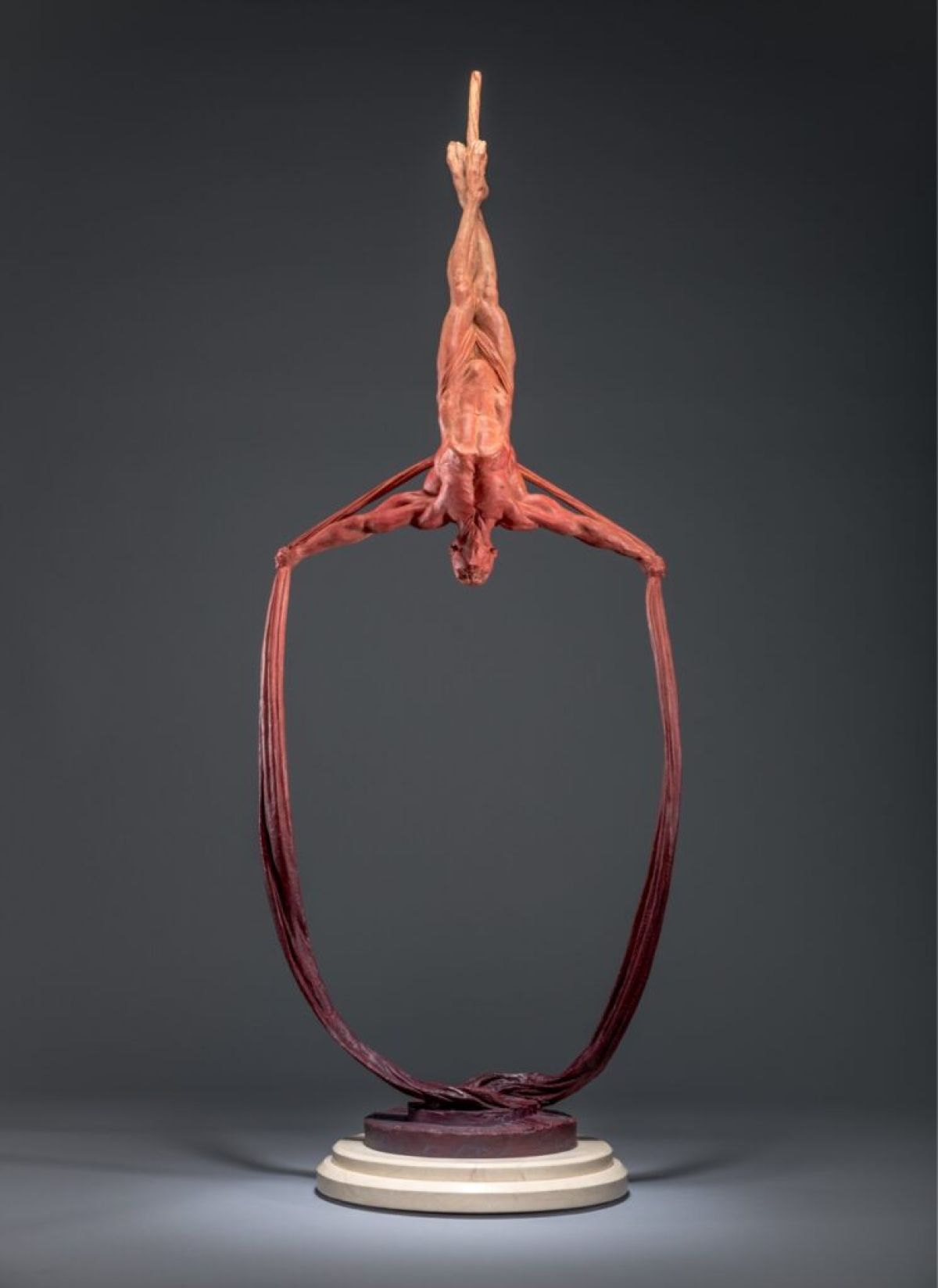 Transcendance (Sasha II), Red, 2016, Bronze. © Copyright 2022 Richard MacDonald
Transcendance (Sasha II), Red, 2016, Bronze. © Copyright 2022 Richard MacDonald
Having sold his first bronze sculpture in 1979, MacDonald has over 30 years’ experience as a figurative sculptor, and it doesn’t look as though his skill – which celebrates both the human form and all its capabilities – is going to slow down anytime soon. Not only this but the artist is keen on passing his knowledge and love of art to the next generation – from providing a space in his Monterey studio for artists to use and expand their experiences, to mentoring schemes, educational sessions, and philanthropic work with local communities and charities, such as Free Arts for Abused Children, which provides art programs to 22,000 children in Los Angeles; allowing them to express themselves in a safe space.
Every piece of Richard MacDonald’s work is daring and dramatic, but it’s also juxtaposed against a sense of tranquillity and timeless grace – as his human forms look to almost take flight – his sculptures capturing a moment of delicacy and beauty, against one of strength.

